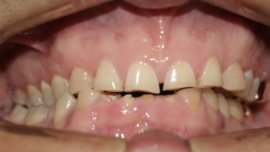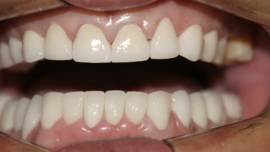About General Dentistry
Composite FillingsA composite (tooth-colored) filling is used to repair a tooth affected by decay, cracks, fractures, etc. The decaying or affected portion of the tooth is removed then filled with a composite filling. Because composite fillings are tooth colored, they can closely match the color of existing teeth, and are more aesthetically suited for use in front teeth and more visible areas. They are extremely durable and will last many years, giving a long lasting, beautiful smile. Reasons for composite fillings:
|
Inlays and OnlaysInlays and onlays can be utilized to conservatively repair teeth that have large defective fillings or have been damaged by decay or trauma. Also, they are more conservative than crowns because less tooth structure is removed in preparation for inlays. Tooth-colored inlays and onlays (porcelain or composite resin material) are popular because they resemble your natural tooth. A tooth-colored inlay is made by a professional dental laboratory and permanently cemented into the tooth. As with most dental restorations, inlays and onlays are not always permanent and may someday require replacement. However, they are highly durable and will last years, giving you a beautiful long-lasting smile. |
Fixed BridgesA dental bridge is a fixed (non-removable) appliance and is an excellent way to replace missing teeth. The “traditional bridge” is the most popular type, and is usually made of porcelain fused with metal. This type of bridge consists of two crowns that fit atop two anchoring teeth (abutment teeth), and are attached to pontics (artificial teeth), filling the gap created by one or more missing teeth. Dental bridges are highly durable and last several years, however they may need to replaced or re-affixed due to normal wear. Reasons for a fixed bridge:
|
DenturesA denture is a removable dental appliance used to replace missing teeth and surrounding tissue. Made to closely resemble your natural teeth, dentures may even enhance your smile. There are two types – complete and partial dentures. Complete dentures are used when all of the teeth are missing, while partial dentures are used when some natural teeth remain. A partial denture both fills in the spaces created by missing teeth, and prevents other teeth from shifting. Dentures are extremely durable appliances that last many years, but may have to be repaired, remade, or readjusted due to normal wear. Reasons for dentures:
|
Dental Implants |


